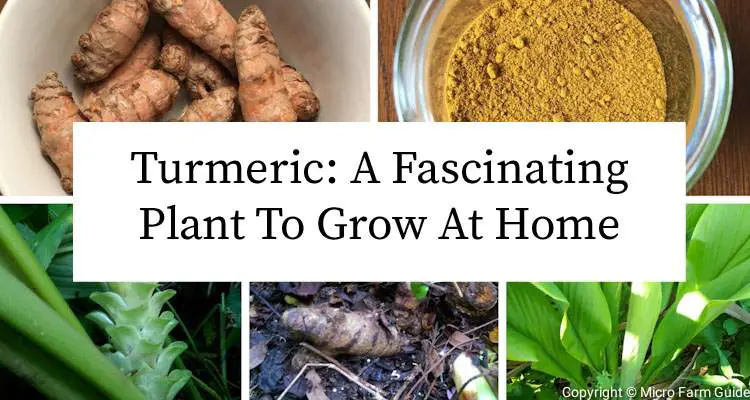Turmeric, or Curcuma Longa, is a versatile little spice that is well-known for its culinary, medicinal, and cosmetic uses, dating back thousands of years.
It’s a valuable plant that is easy to grow in your garden, even if it’s just some pots on your balcony.
But here is the exciting part — using simple equipment, you can turn your homegrown Turmeric into powdered spice. Interested?
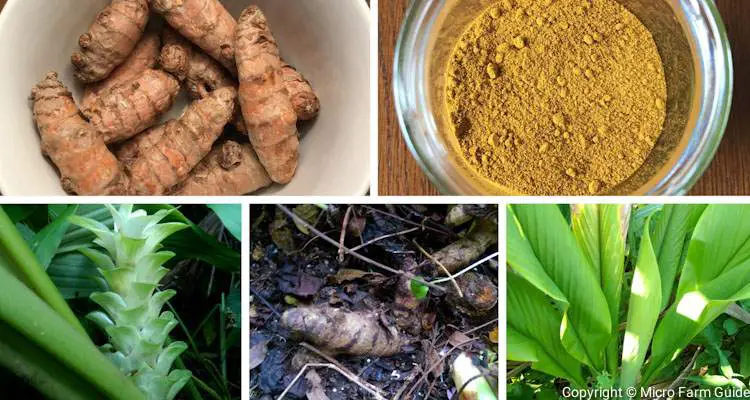
In this article, we will explore the secrets of Turmeric – from growing this useful herb to the magic it can bring to your food and health.
But before we do, let’s take a quick peek at the origin of this fantastic plant.
Where Did Turmeric Come From?
Turmeric is native to Indonesia and southern India. It has been used extensively as a spice and ingredient in Vedic medicines for over 4,000 years.
Due to its color and uses, it gained the nickname Indian Saffron, even though the plants are from different families.
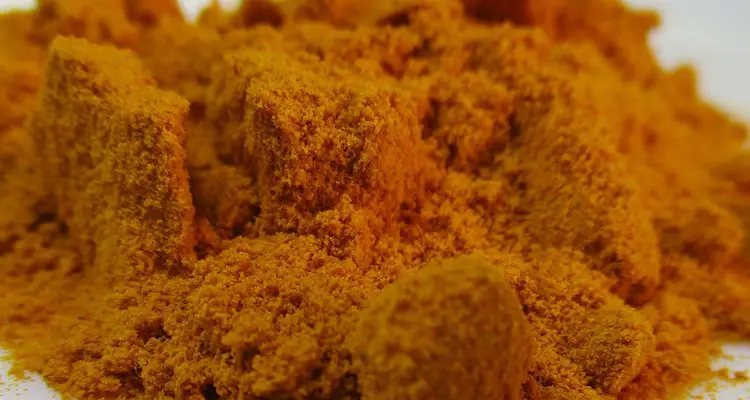
To date, India is still the largest producer, consumer, and exporter of Turmeric. However, the plant is grown worldwide — a testament to its popularity.
What Does The Turmeric Plant Look Like?
Turmeric plants have large, oblong, dark green leaves. It can grow to about 3 feet tall and is easily mistaken for its ornamental relatives.
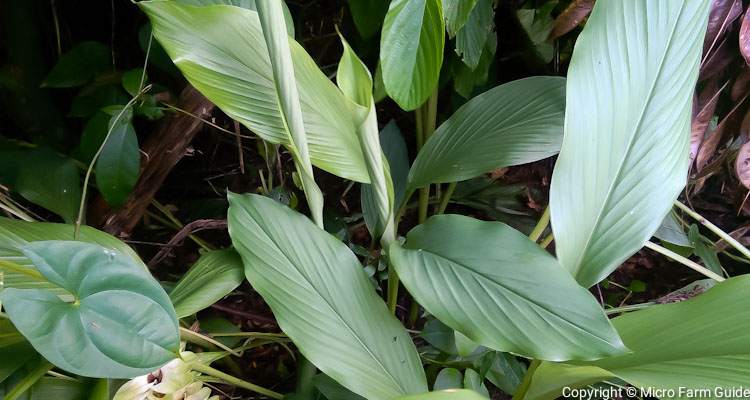
As the plant grows, it produces a white and yellow flower that pushes out from the center of the stalk.
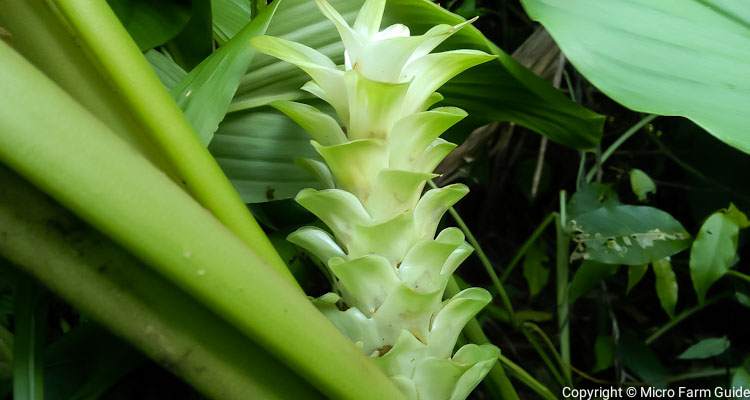
However, the most essential part of the plant is the rhizome, which grows underground and looks like an orange version of ginger.
It usually sticks out of the ground slightly as the plant approaches harvest time. At this point, the leaves start to dry and lay on the ground.
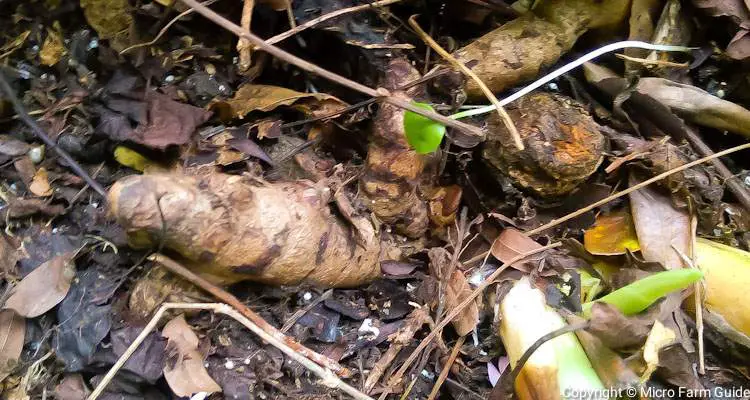
How To Grow Turmeric At Home (Simple Guide)
Turmeric is a shallow-rooted, tropical plant that loves to grow in warm, well-drained soil with lots of sunshine. So, if you live in a place where it’s warm, you’re in luck.
It’s not too picky about the soil, but it grows best in moist, well-drained soils and containers due to its shallow root system.
Turmeric grows from its rhizomes — the swollen stems found underground. So, to cultivate Tumeric:

- You’ll first need to get some fresh turmeric rhizomes. These are usually available at greengrocers or farmer’s markets.
- Next, choose some small rhizomes (setts) containing one or two buds.
- Then, plant them about 2 inches (5 cm) deep in well-draining, fertile soil, spacing them about 18 inches (45 cm) apart.
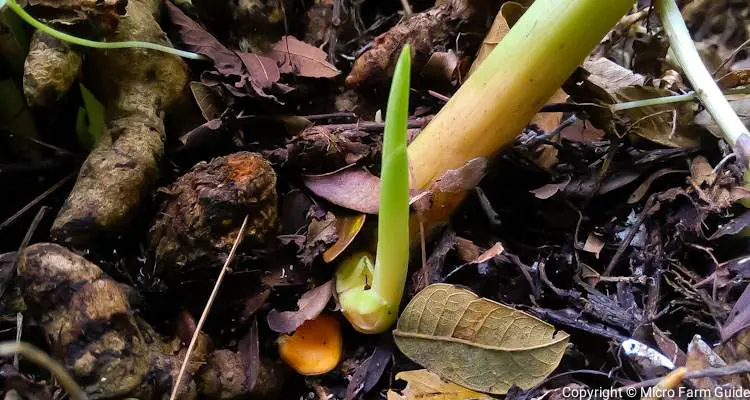
This will give them enough space to spread out as they mature. However, please remember that Turmeric takes up to 10 months to grow.
Harvesting and Processing Turmeric Rhizomes
Turmeric rhizomes are ready to harvest once their leaves turn yellow and die back.
To harvest Turmeric, dig up the rhizomes carefully with a garden fork.
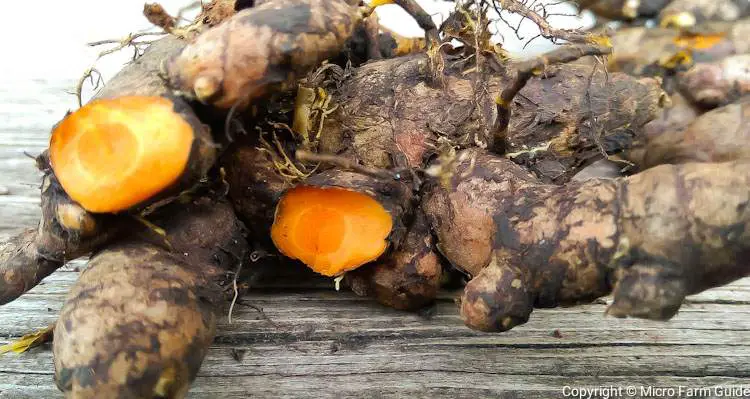
Remove large clumps of dirt and thread-like roots. At this point, I like to wash the rhizomes thoroughly using a soft brush.
Once cleaned, you can separate the Turmeric into two batches — those you intend to use fresh and those you want to dry.
Next, place the “fresh” batch aside and prepare the others for drying.
Slice the Turmeric into thin pieces using a sharp knife. Ideally, these should be less than ¼ inch thick.
Then, place the slices on a greaseproof paper-covered tray.
Place this in a well-ventilated area, away from direct sunlight, and allow the air to dry.
The turmeric slices are ready when it is brittle enough to snap in half.
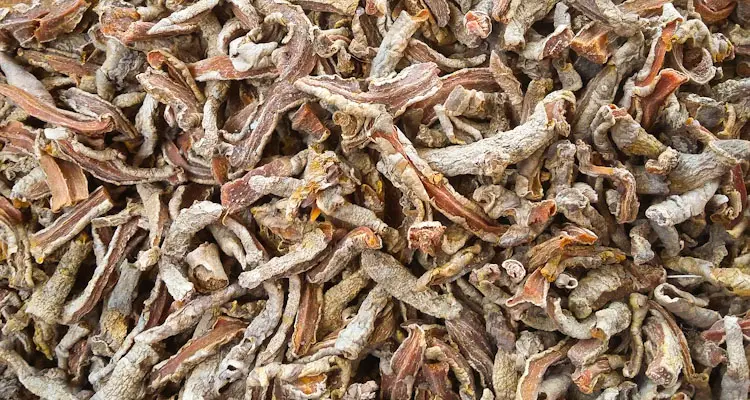
Once dried, you can grind the slices into powder using a coffee grinder, food processor or mortar and pestle.
Then, place the container in an air-tight glass jar and put it in a dark cupboard, where it can remain for up to 3 years.
Health Benefits Of Turmeric
Turmeric contains several beneficial compounds, which suggests its potential to treat various ailments, including sprains and bruises.
Traditionally, it was used to help improve digestion, relieve arthritis depression, and boost the overall immune system.
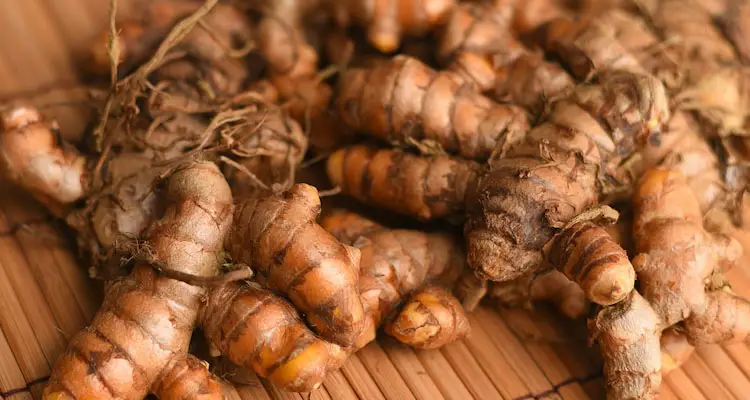
Studies show that Turmeric contains a compound called Curcumin, which has powerful antioxidant and anti-inflammatory properties.
However, the amount of Curcumin needed is usually much more than is available in everyday meals, resulting in a booming Turmeric supplements industry.
That said, traditional Ayurvedic practices suggest that it’s possible to enjoy the full health benefits of Turmeric rhizomes once prepared and used correctly.
Culinary And Cosmetic Uses Of Turmeric
Turmeric is well-known for its use in Asian and West Indian cuisine. It is also popular in various skin routines.
It’s the main ingredient in curry powder, a must to flavor roti, curries, and other street foods.
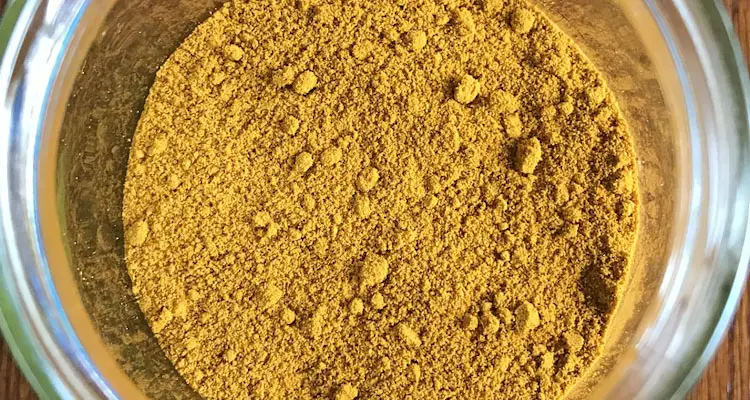
Plus, the iconic yellow color is used directly as a food coloring or extracted as a Yellow color food additive listed as E 100.
This bright yellow coloring was used as a textile dye in ancient civilizations and sometimes mixed with substances to produce a reddish-brown color.
Nowadays, Turmeric is used in many soaps, creams, and other topical skincare solutions to exfoliate dead skin and treat skin conditions such as acne and wrinkles.
Final Thoughts
I know that I’ve only scratched the surface of this amazing plant. (No pun intended.)
It’s easy to grow, makes a valuable spice, and is jam-packed with uses and benefits you can enjoy.
Now, I encourage you to plant some turmeric, watch it grow, and savor the delicious dishes you can create.
Feel free to reach out if you have any questions or need more tips. Or you can visit our Plant Guide to learn about other valuable herbs and spices.
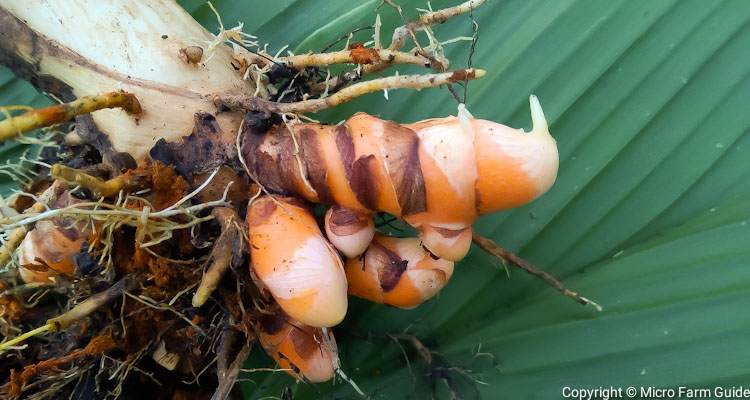
Related Questions
1. Is Turmeric and Ginger the same?
No, Turmeric and Ginger are not the same. They differ in color, flavor, and uses. However, they both belong to the same Zingiberaceae family of plants.
2. How to take Turmeric for health benefits?
First, Turmeric must be boiled for at least 10 minutes and then taken after a meal since food helps with absorption. However, it can also be taken as a capsule.
3. What is Turmeric good for?
Turmeric is good for reducing inflammation and boosting the immune system due to compounds such as Curcumin, which has potent antioxidant and anti-inflammatory properties.
References
Ingredient Association Of Color Manufacturers. Curcumins. iacmcolor.org. Accessed October 2023
IFAS Blogs. Turmeric Health Benefits And How To Grow It Home. ifas.ufl.edu. Accessed October 2023
National Library Of Medicine. Chapter 13 – Turmeric, The Golden Spice. ncbi.nlm.nih.gov. Accessed October 2023
IFAS Gardening Solutions. Turmeric. ifas.ufl.edu. Accessed October 2023

